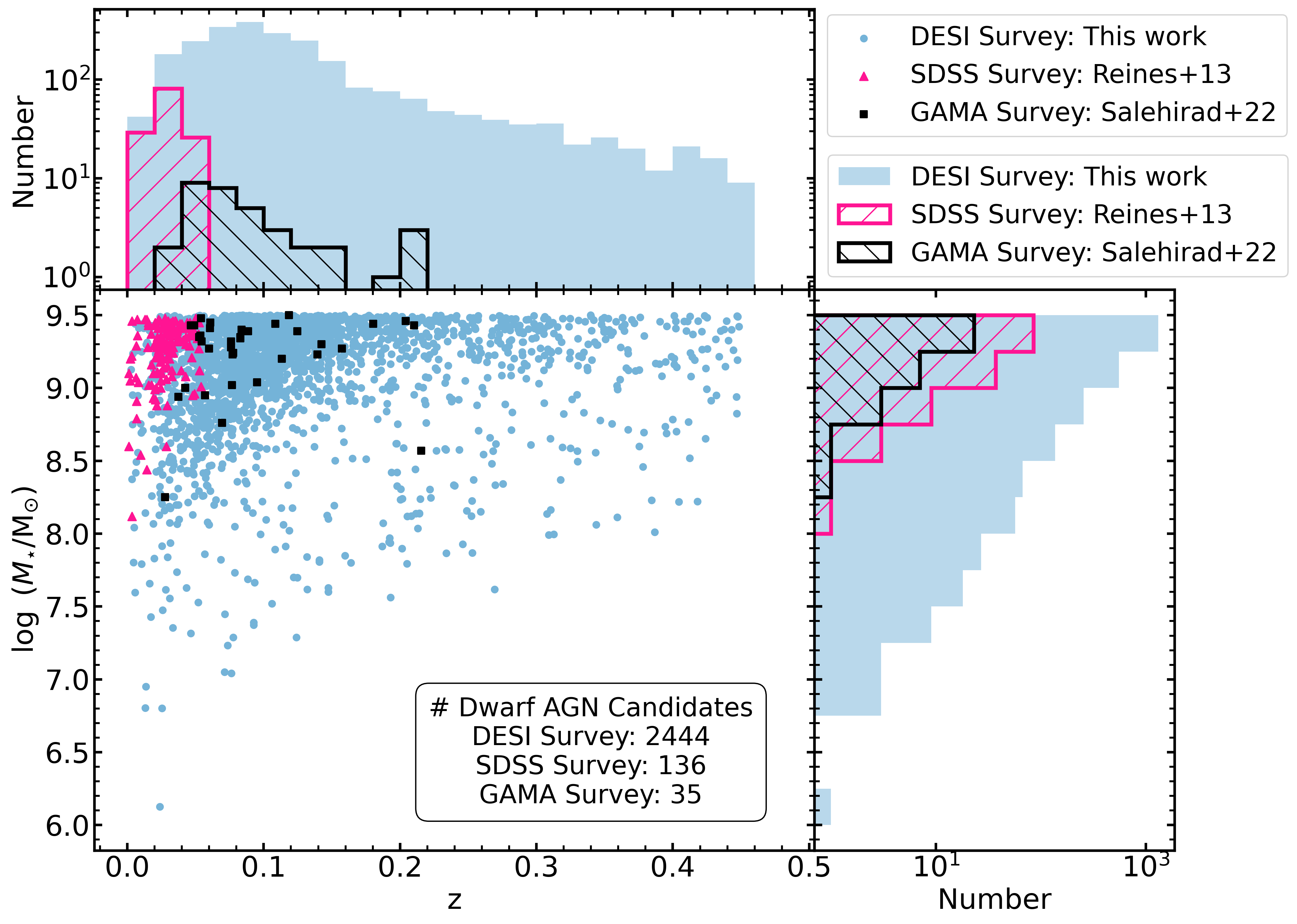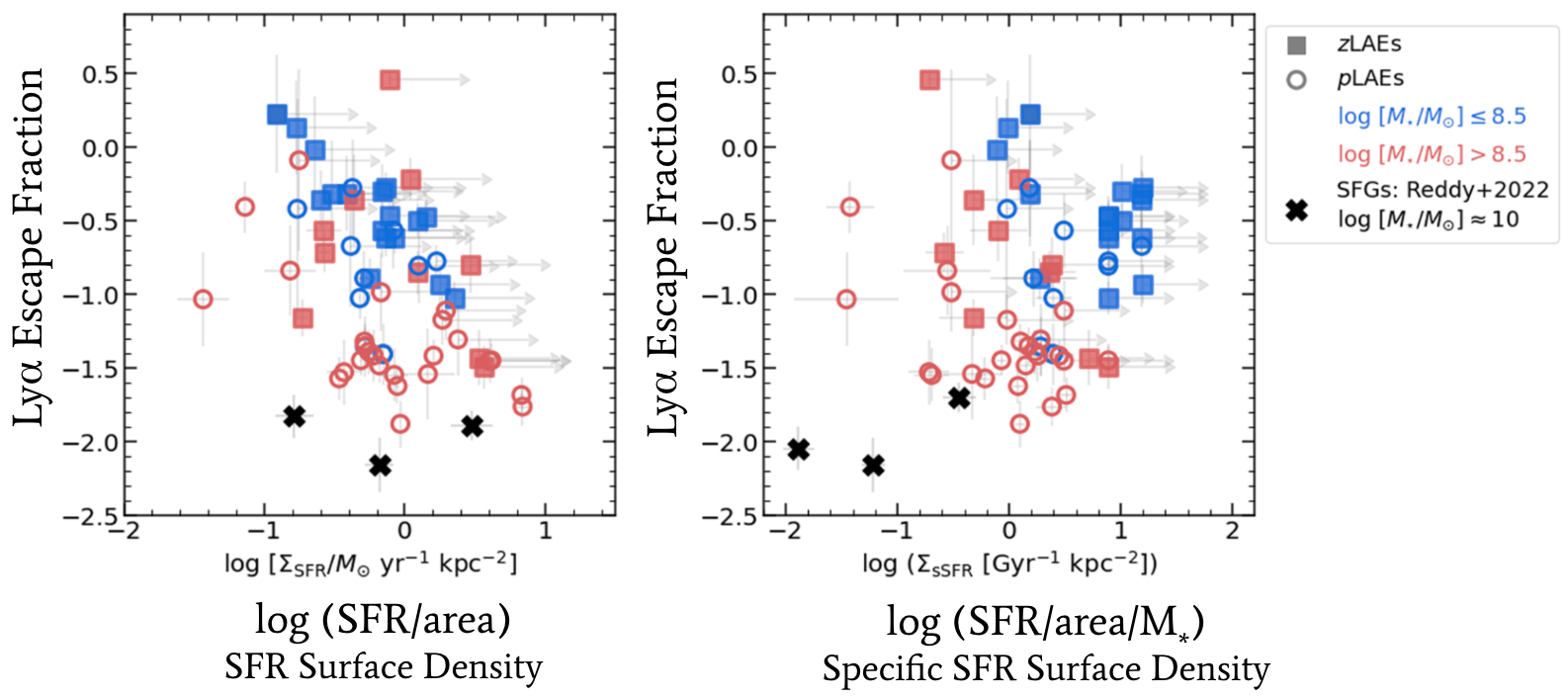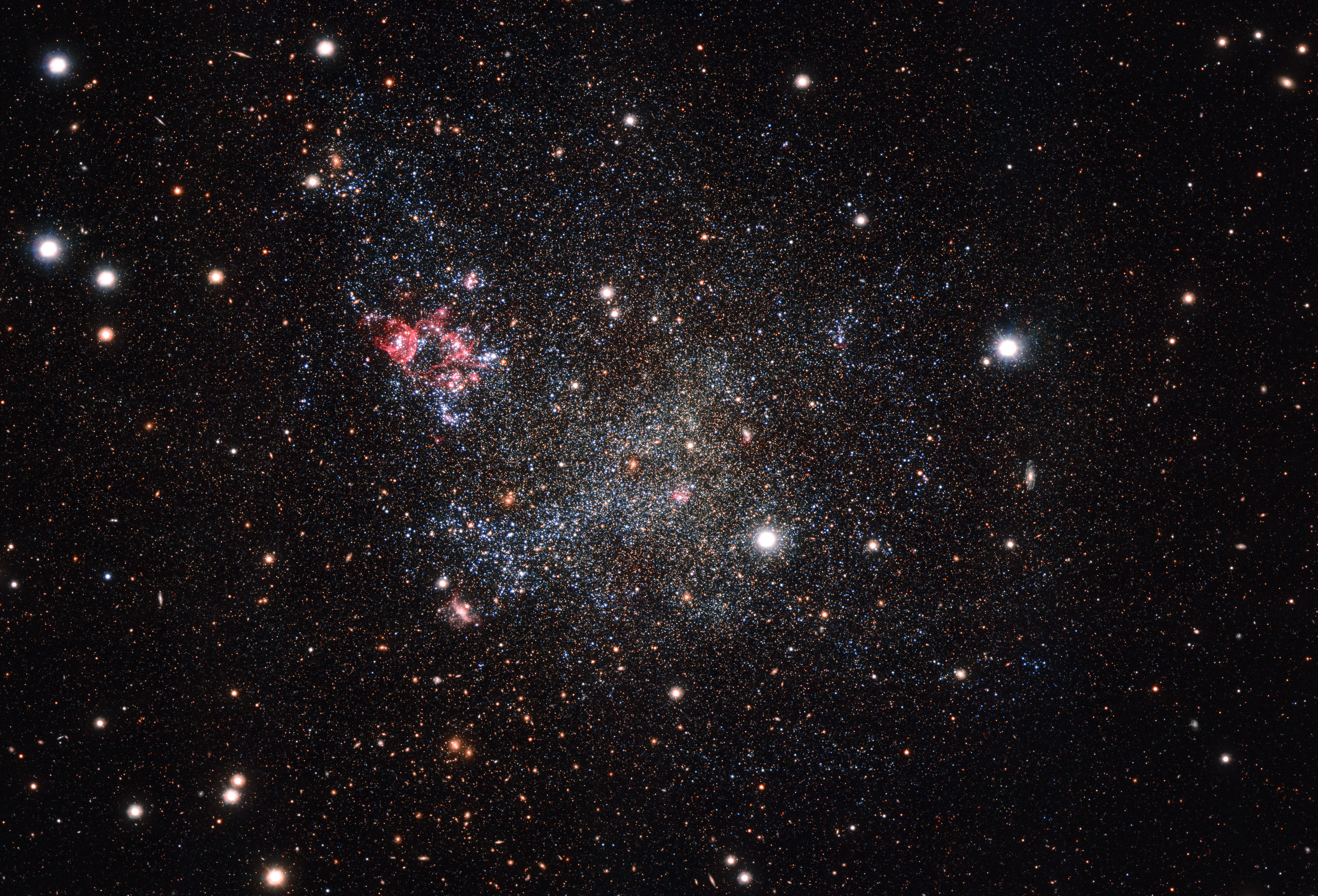Research
My research focuses on understanding how low-mass "dwarf" galaxies form and evolve in the Universe. Dwarf galaxies are the most abundant galaxies in the Universe, yet they remain poorly understood. What are their evolutionary histories? Do they follow the same path as massive galaxies? Do they have black holes? If yes, how do these black holes and the galaxies grow together? I use multi-wavelength observations of dwarf galaxies to answer such key questions in galactic astronomy.
I detail my current and past research below. You can also check out my CV or the list of my publications.
Current Research
Co-Evolution of Dwarf Galaxies and Their Central Black Holes
The role of active BHs (or AGN) in the evolution of dwarf galaxies is a topic of active debate. The immense energy released by an AGN can profoundly influence the growth of dwarf galaxies, especially since these galaxies often struggle to retain gas for star formation due to their lower mass (and therefore lower gravitational potentials). This dynamic raises interesting questions about the balance between star formation, which is essential for galaxy growth, and AGN activity, which fuels BH growth. With our expanded census of dwarf AGN candidates (see below), we are now leveraging multi-wavelength data (from X-rays to infrared) to explore how dwarf galaxies and their cenral BHs grow, and whether one influences the other or if they co-evolve together.
Pushing the Limits of the Search for AGN in Dwarf Galaxies

Black holes (BHs) are fascinating objects in the Universe that merge with other BHs or feast on gas to grow. Identifying BHs directly is difficult and is restricted to only nearby galaxies. When matter accretes onto the BHs, it releases vast amounts of energy, turning into an Active Galactic Nuclei (AGN). This energy ionizes the surrounding gas, acting as a beacon for identifying the BHs. We know with fair confidence that all massive galaxies, like our Milky Way, host BHs at their centers. However, the picture becomes unclear as we move towards their lower-mass counterparts. Previous searches for optical AGN in dwarf galaxies have revealed that only ~0.5% host an AGN, and until now, ~500 such candidates were known. Using the early data from the Dark Energy Spectroscopic Instrument (DESI) survey, we identified an astounding ~2,500 dwarf AGN candidates, more than tripling the exiting count of such candidates! We also discovered that ~2% of dwarf galaxies in our sample host an AGN, much higher relative to prior studies. This suggests that we have been missing a substantial number of undiscovered BHs in the low-mass galaxy regime. It opens the possibility that even more BHs are concealed within these galaxies, potentially influencing their growth. This sample is the largest sample of dwarf AGN candidates to date, and opens the floor for detailed statistical analysis of dwarf galaxies and their central BHs.
Typically, the BHs found in dwarf galaxies are expected to be Intermediate-Mass Black Holes (IMBHs), which are believed to be the relics of the very first BHs formed in the Universe and possibly the "seeds" of the supermassive BHs found in massive galaxies. From our sample of DESI galaxies, we also identified ~300 IMBH candidates, creating the most extensive collection of IMBH candidates to date. Intriguingly, only 70 of these candidates overlap with our sample of dwarf AGN candidates, revealing that not all dwarf AGN host IMBHs nor all IMBH candidates reside in dwarf galaxies. This dual discovery not only expands our understanding of the BH population in the Universe, but also sets the stage for further explorations regarding the formation of first BHs in the Universe and their role in galaxy evolution.
Past Research
Lyα Escape is Efficient in Compact Star-Forming Galaxies with Low Gravitational Potential

Lyman-Alpha Emitters (LAEs) are faint low-mass, star-forming galaxies at high redshifts (larger distances), and they are mainly identified based on their strong Lyα emission. However, Lyα photons are resonant in nature, meaning they interact repeatedly with any available neutral hydrogen atoms, and it is unclear how they manage to escape from galaxies. Understanding how Lyα escapes helps us learn more about the distribution of gas and dust in galaxies, and how stellar processes contribute to the escape of ionizing photons from low-mass galaxies. We used multi-wavelength observations from the Subaru telescope and the Hubble Space Telescope to study the faintest LAEs at a redshift, z ≈ 2.65, and compared them with typical star-forming galaxies at z ≈ 2-3. Our results suggest that the compact shapes of low-mass galaxies can lead to conditions that makes it easier for Lyα photons to escape. This research offers insights into the processes that led to the reionization of the universe and connects to studies of primordial galaxies with the James Webb Space Telescope.
Evidence of Hierarchical Accretion in a Dwarf Irregular Galaxy

One of the key questions about dwarf galaxies is how they are built and what shapes them. Studying the resolved stars in the faint outer parts of these galaxies is crucial for understanding how they formed - whether it is from their own internal processes or from merging with other smaller galaxies. Using the Subaru telescope, we conducted the widest and deepest survey of resolved stellar populations in a nearby dwarf galaxy, IC1613, to explore the structure of its outer regions. We found some evidence of accretion, in accretion to a stellar component from a possible stellar feedback event. This pioneering study lays the foundation for future wide-field studies of low-mass galaxies, especially with the upcoming Vera Rubin Observatory.